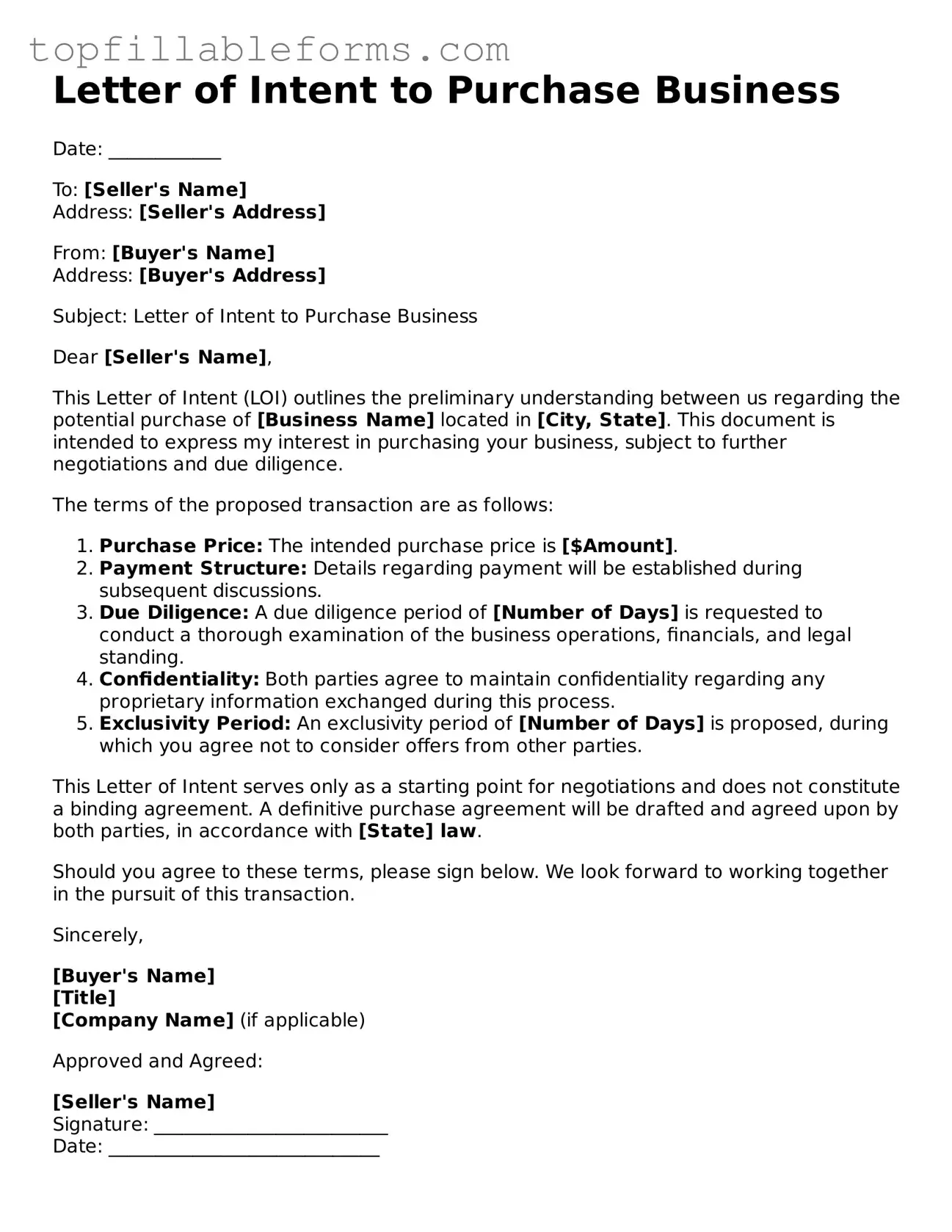Letter of Intent to Purchase Business
Date: ____________
To: [Seller's Name]
Address: [Seller's Address]
From: [Buyer's Name]
Address: [Buyer's Address]
Subject: Letter of Intent to Purchase Business
Dear [Seller's Name],
This Letter of Intent (LOI) outlines the preliminary understanding between us regarding the potential purchase of [Business Name] located in [City, State]. This document is intended to express my interest in purchasing your business, subject to further negotiations and due diligence.
The terms of the proposed transaction are as follows:
- Purchase Price: The intended purchase price is [$Amount].
- Payment Structure: Details regarding payment will be established during subsequent discussions.
- Due Diligence: A due diligence period of [Number of Days] is requested to conduct a thorough examination of the business operations, financials, and legal standing.
- Confidentiality: Both parties agree to maintain confidentiality regarding any proprietary information exchanged during this process.
- Exclusivity Period: An exclusivity period of [Number of Days] is proposed, during which you agree not to consider offers from other parties.
This Letter of Intent serves only as a starting point for negotiations and does not constitute a binding agreement. A definitive purchase agreement will be drafted and agreed upon by both parties, in accordance with [State] law.
Should you agree to these terms, please sign below. We look forward to working together in the pursuit of this transaction.
Sincerely,
[Buyer's Name]
[Title]
[Company Name] (if applicable)
Approved and Agreed:
[Seller's Name]
Signature: _________________________
Date: _____________________________
